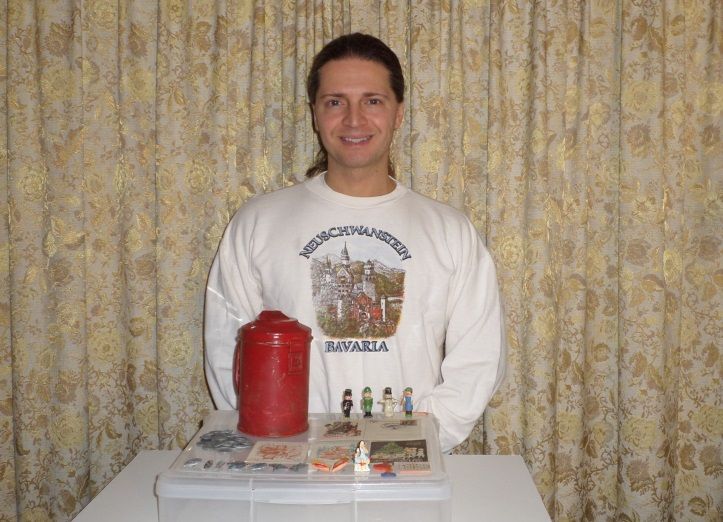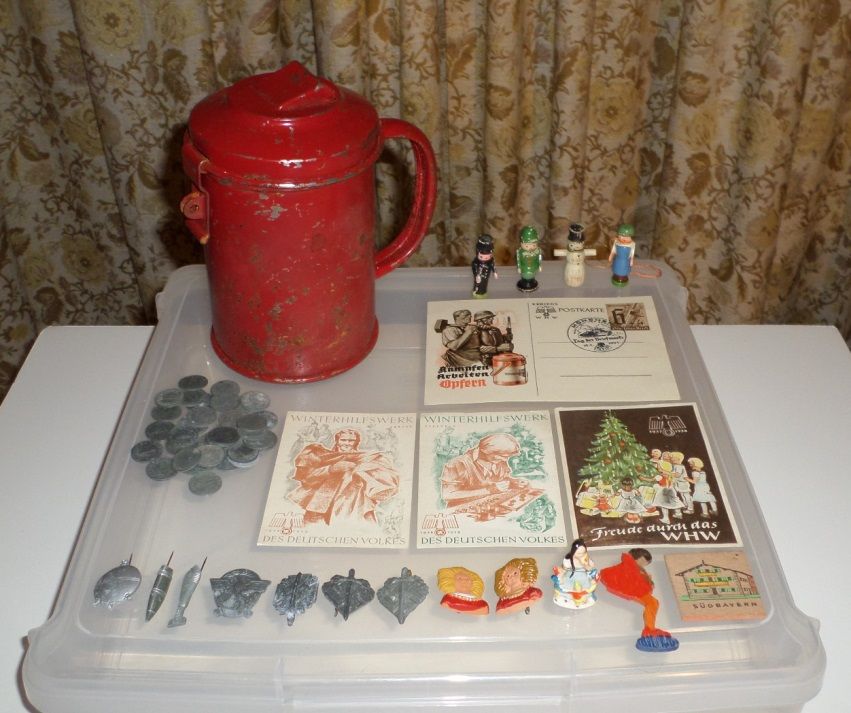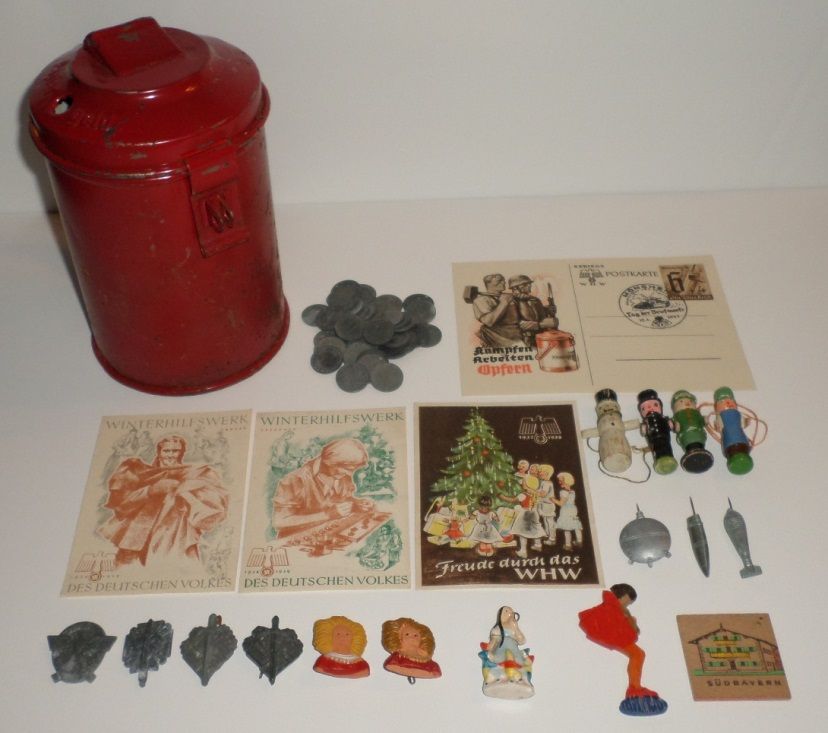In this video, you will see WHW items (with descriptions), a collection can and some authentic one pfennig coins (with the Eagle and the Hakenkreuz aka the Swastika) from the early 1940s:
http://www.youtube.com/watch?v=qCT_nmeBSfA
Photographs ...



Descriptions for the immediate photo above ...
1. A collection can. It is missing the paper label. The Third Reich organized other charities as well such as the DJH [which was the merger of the Deutsches Jugendherbergswerk (German Youth Hostel Association) into the Hitlerjugend (Hitler Youth Paramilitary Organization)] and the Deutsches Rotes Kreuz (German Red Cross) so this can could have been used for those campaigns in addition to the WHW.
2. One pfennig coins from the early 1940s. Some of these very pfennigs may have been in the collection can to the left in the 1940s. It is certainly possible.
3. A postcard with WHW along with the Eagle and the Hakenkreuz. The slogan is "Kämpfen Arbeiten Opfern" ("Fight, Work, Sacrifice"). The postcard features a German soldier and a German laborer with an example of can similar to the one that I have on display. My can has a mug handle while the can depicted in the postcard has a pail handle. To the right is a postmark with München (Munich) and "Tag der Briefmarke" ("International Stamp Day") with the 12th of January 1941 as the date.
4. Two mini poster stickers with "Des Deutschen Volkes" meaning "The German People" from the 1938/1939 season. In the first, a man is holding blankets and in the second, a woman is painting souvenir pins ... examples of these painted souvenirs will be shown below.
5. A mini poster sticker with children gathering around a Christmas Tree (Tannenbaum) with the phrase "Freude durch das WHW" meaning "Joy through the WHW". This is from the 1937/1938 season.
6. Four wood puppets made to be used as ornaments. You can see the strings on a couple of them. These were sold on December 16 and 17 of 1939. The four are a snowman, a chimney sweeper, a hunter and a shoemaker (the shoemaker has the green hat variation ... there is another variation with a blue hat).
7. Three items from the Weapons And Munitions Stickpins Series that were sold on November 2 and 3, 1940. The three are a naval mine, an artillery shell and a mortar shell.
8. A 1942 Polizei (Police) Donation Badge.
9. Three items (two duplicates) from the Heroic Emblem Series sold on March 28 and 29, 1942. You can see the dagger, the Hakenkreuz and the German Iron Cross.
10. Two pins that represent the German character Struwwelpeter. They were issued between January 31 to February 5, 1942. If you recall the postcard above where the woman was paitning souvenirs, these are the kind of items that would have been painted. This is the same pin with two different paint variations.
11. One example from the Porcelain Fairy Tale Figures Series. It is Snow White (with the blue dress variation ... there is a white dress variation as well). This series was originally scheduled to be sold on March 6 and 7 of 1943. The date wa spostponed due to the Battle Of Stalingrad. As many of you know, Stalingrad was a disaster for the German Army.
12. One example from the Wood German Fairy Tale Series that was sold on the 17th, 18th and 19th of December of 1937. This is spcifically the Pied Piper Of Hamelin (color variations exist for this example also). The his head is leaning to down to the play the gold pipe musical instrument.
13. From the Wooden German Farmhouses Series, a wooden pendant-type item representing a farmhouse in Südbayern (meaning Southern Bavaria). These were issued on November 21 and 22 in 1942.
Note: You can see some oxidation on the coins, the police pin and the emblem pins. This is common in items made with zinc.
A book sold at http://www.winterhilfswerk.com can give you more in-depth descriptions of WHW items. The website is also worth looking at for making purchases of original authentic WHW souvenirs as well.
Fröhliche Weihnachten und Auf Wiedersehen!




No comments:
Post a Comment